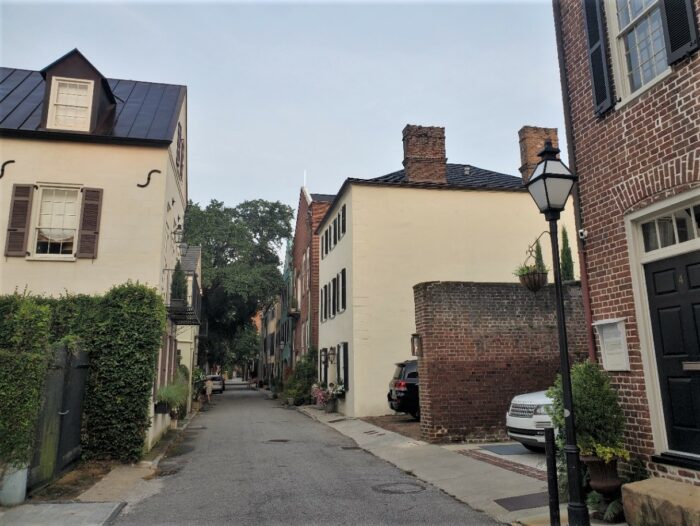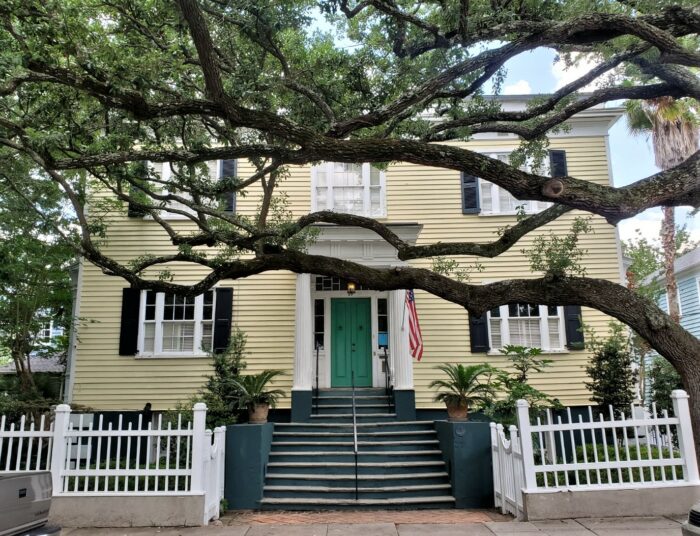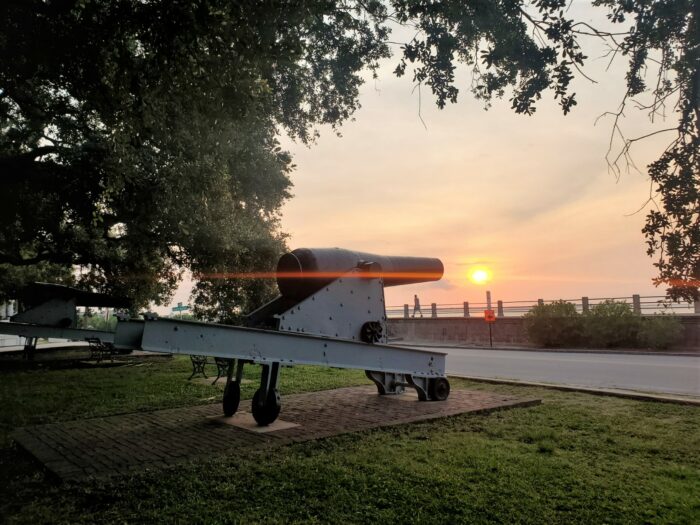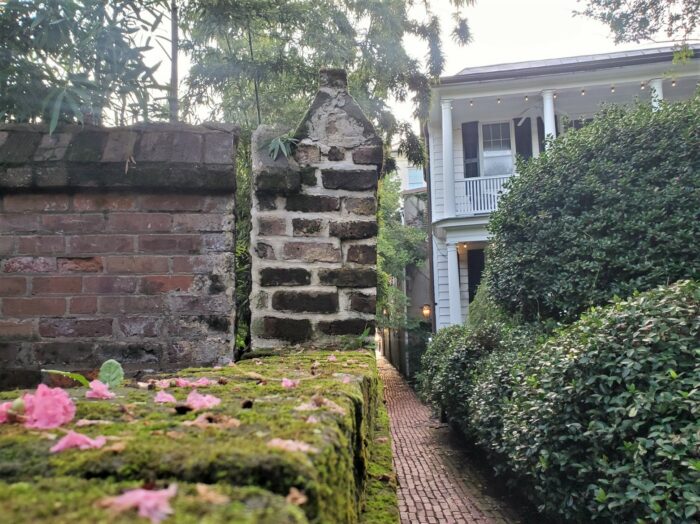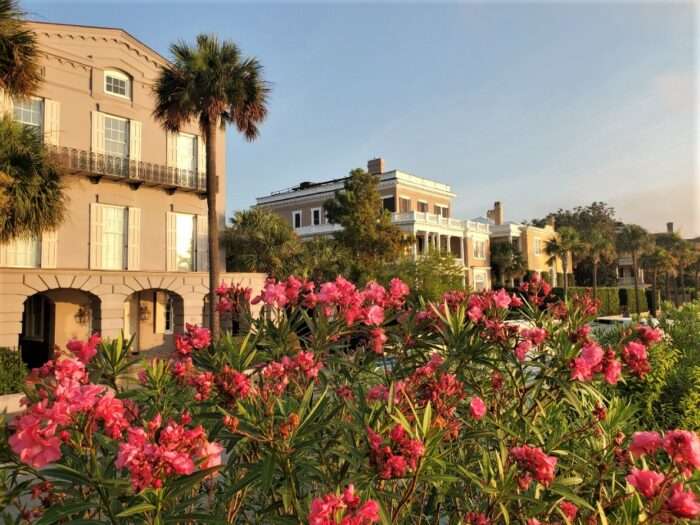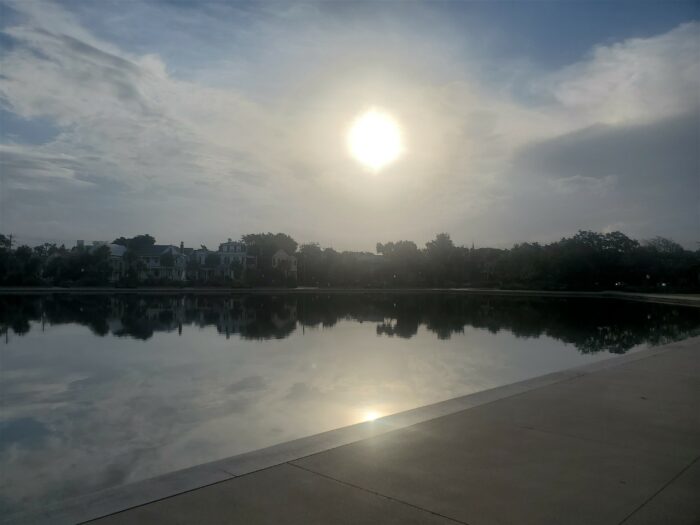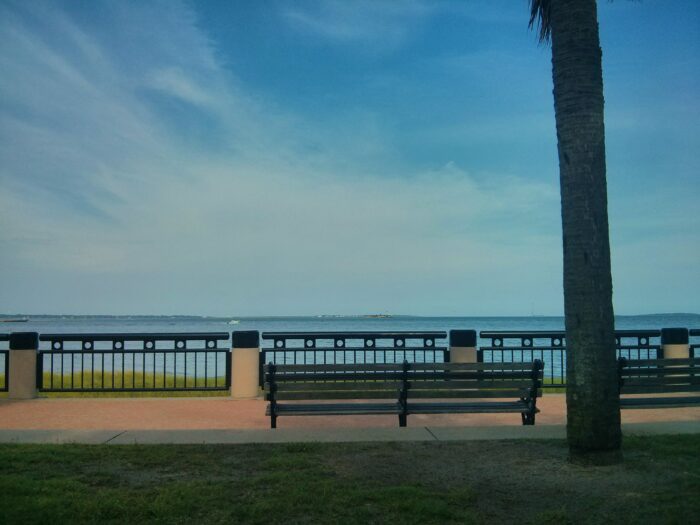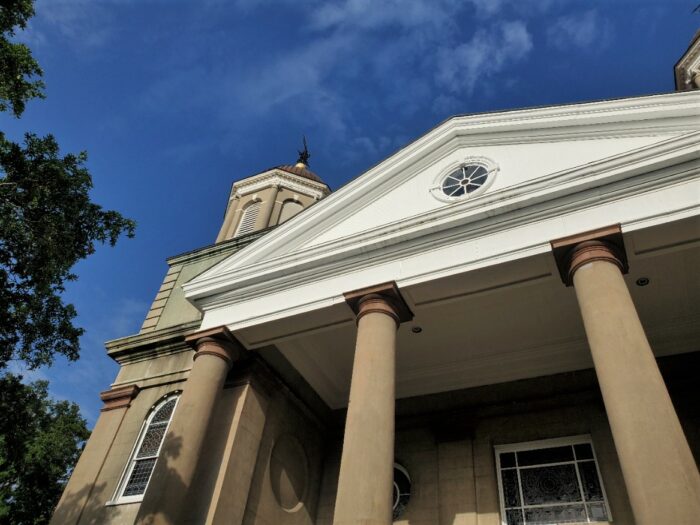One of the best things you can do in Charleston is walk, walk and walk. The beauty varies and you will find streets such as this one — Elliott Street, which was once one of the most important commercial thoroughfares in pre-Colonial Charleston.
Bennett-Jones
The Bennett-Jones House on Smith Street was built in 1840, and is conveniently located just down the street from Brown Dog Deli 🙂
Fireball
Sunrise from White Point Garden is often a spectacular event. This “columbiad” (long gun) was first used by the Confederate army in its defense of nearby Fort Sumter during the Civil War.
A Bit of the Rainbow
Early morning along Rainbow Row.
Verdant Alley
Stoll’s Alley is lush, narrow, brick-lined path that runs between Church Street and East Bay. It dates back to the early 1700’s and is named after Justinus Stoll, a blacksmith who lived there.
Lighting Up East Battery
The view across the oleander to the houses of East Battery in the early morning sun. The house on the left was built in 1845 by William Ravenel — for whom the Cooper River Bridge is not named.
Rutledge Street Pond
The heat and humidity in Charleston is pretty apparent in this photo. 7:45 AM and the “feels like” temperature was 93 degrees.
Did you know the original name for Colonial Lake was “Rutledge Street Pond?”
Spidey Sense
Within Charleston’s diverse ecosystem, there are a lot of cool residents. It’s always wonderful to cross paths with a banana spider, also known as a golden orb weaver.
Folly View
From this bench in Waterfront Park you can see Shute’s Folly, a small, low lying island in the middle of Charleston Harbor. Originally used to house defensive fortifications for Charleston, the property was bought by Charlestonian Joseph Shute in 1746 — for which he seems to have been ridiculed.
Over time the island passed through a number of ownership hands, but retained the Folly name. It eventually became home to Castle Pinckney, which was originally built in 1797 and then demolished in 1804 by a hurricane. The masonry Castle Pinckney, whose remains can still be seen, was completed in 1808.
Unlike Seward’s Folly, which picked up the snappy new name of Alaska, this folly remains credited to poor Mr. Shute.
First Scots
First (Scots) Prebyterian Church is the 5th oldest church building in Charleston, and its congregation dates back to 1731. Built in 1814 by a pair of brothers from Scotland, you can find Scottish symbols throughout the building.
- « Previous Page
- 1
- …
- 21
- 22
- 23
- 24
- 25
- …
- 188
- Next Page »
